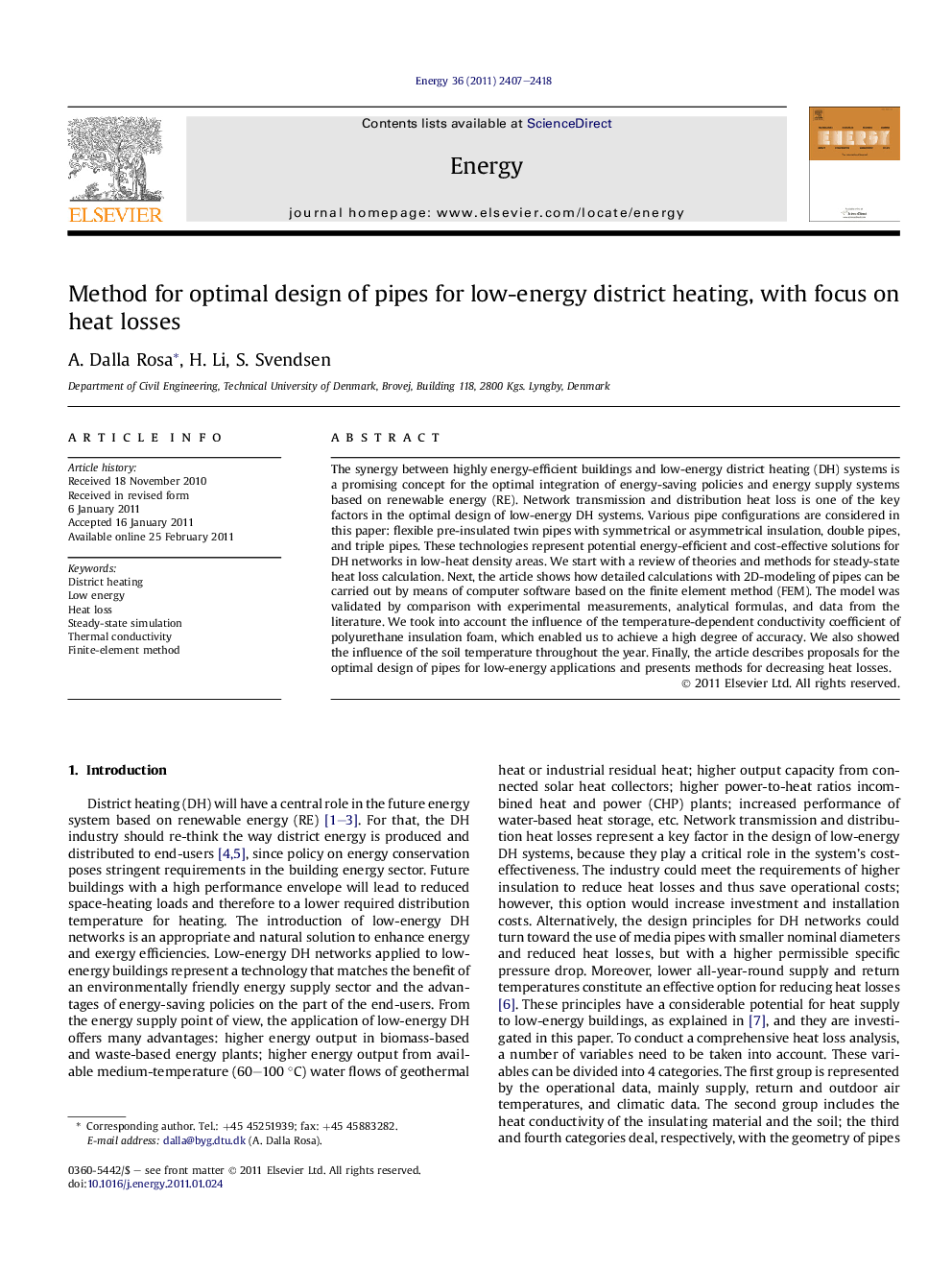| Article ID | Journal | Published Year | Pages | File Type |
|---|---|---|---|---|
| 1734470 | Energy | 2011 | 12 Pages |
The synergy between highly energy-efficient buildings and low-energy district heating (DH) systems is a promising concept for the optimal integration of energy-saving policies and energy supply systems based on renewable energy (RE). Network transmission and distribution heat loss is one of the key factors in the optimal design of low-energy DH systems. Various pipe configurations are considered in this paper: flexible pre-insulated twin pipes with symmetrical or asymmetrical insulation, double pipes, and triple pipes. These technologies represent potential energy-efficient and cost-effective solutions for DH networks in low-heat density areas. We start with a review of theories and methods for steady-state heat loss calculation. Next, the article shows how detailed calculations with 2D-modeling of pipes can be carried out by means of computer software based on the finite element method (FEM). The model was validated by comparison with experimental measurements, analytical formulas, and data from the literature. We took into account the influence of the temperature-dependent conductivity coefficient of polyurethane insulation foam, which enabled us to achieve a high degree of accuracy. We also showed the influence of the soil temperature throughout the year. Finally, the article describes proposals for the optimal design of pipes for low-energy applications and presents methods for decreasing heat losses.
► The article shows how detailed calculations with 2D-modeling of district heating pipes can be carried out by means of computer software based on the finite-element method (FEM). ► The FEM model is validated by comparison with experimental measurements, analytical formulas, and data from the literature. ► The model takes into account the influence of the temperature-dependent conductivity coefficient of polyurethane (PUR) insulation foam, which enables to achieve a high degree of accuracy in the calculation of the heat transfer. ► The article describes proposals for the optimal design of district heating pipes for low-energy applications and presents methods for decreasing heat losses.
